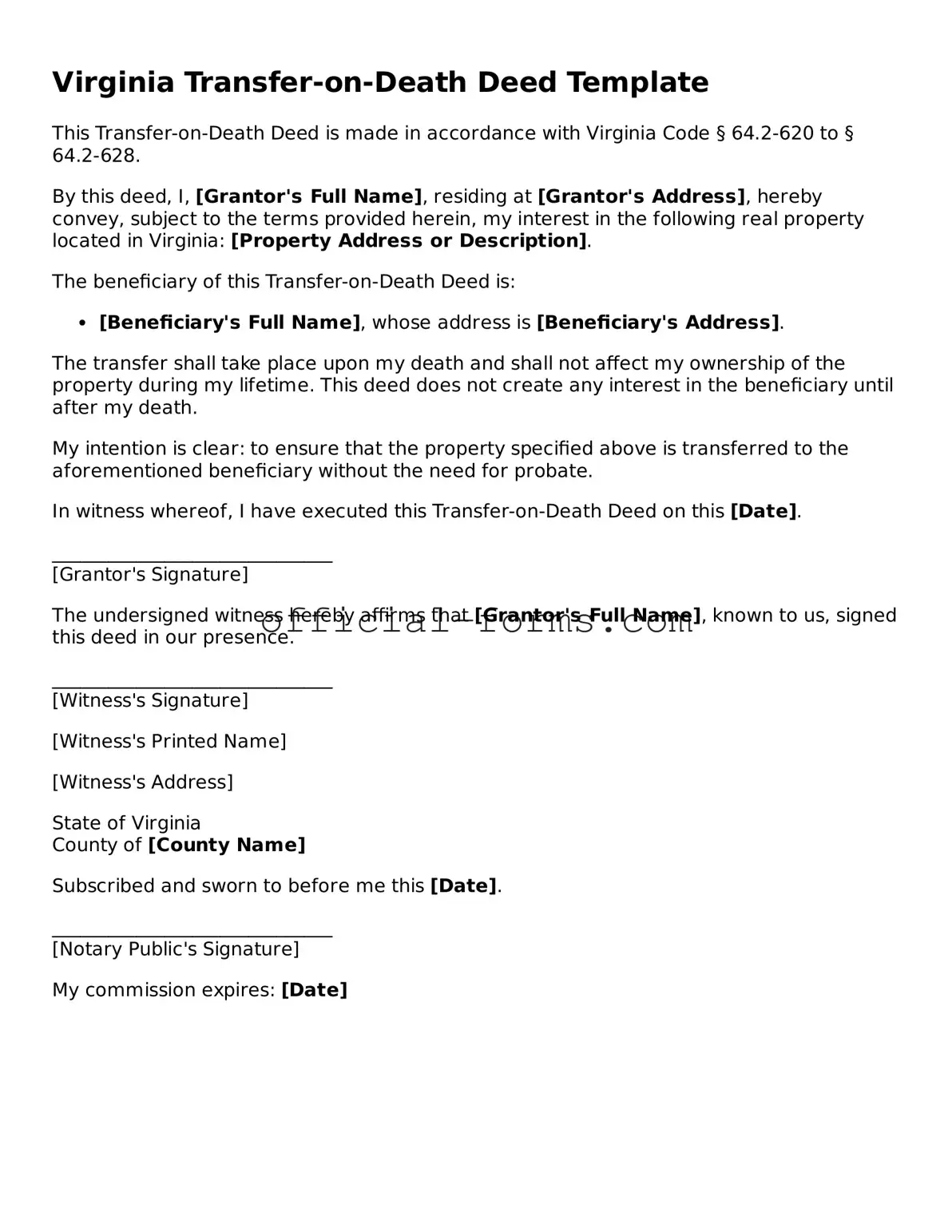Filling out the Virginia Transfer-on-Death Deed form can be a straightforward process, but many individuals make common mistakes that can lead to complications. One frequent error is neglecting to include the full legal name of the property owner. This omission can create confusion and may invalidate the deed. It is essential to ensure that the name matches the title of the property exactly.
Another common mistake involves failing to properly identify the beneficiaries. The deed should clearly specify who will inherit the property upon the owner’s death. Using vague terms or nicknames can lead to disputes among heirs. It is advisable to use full legal names and, if applicable, include their relationship to the property owner.
Some individuals forget to provide a complete legal description of the property. Simply listing the address may not suffice. The deed should contain a precise description, typically found in the property’s current deed. This description ensures that there is no ambiguity about which property is being transferred.
Additionally, people often overlook the requirement for signatures. The Transfer-on-Death Deed must be signed by the property owner in the presence of a notary public. Failing to do so can render the deed ineffective. It is crucial to ensure that all signatures are obtained and properly witnessed.
Another mistake involves not recording the deed with the local land records office. After completing the form, individuals must submit it for recording. Without this step, the deed may not take effect, leaving the property in limbo. Recording the deed protects the owner’s intentions and informs others of the transfer plan.
Some individuals mistakenly believe that they can alter the deed after it has been recorded. While it is possible to revoke or change a Transfer-on-Death Deed, it must be done through a formal process. Simply crossing out names or making handwritten changes can lead to legal challenges.
People sometimes neglect to consider the tax implications of transferring property via a Transfer-on-Death Deed. While this method can avoid probate, it does not eliminate potential tax liabilities. Consulting with a tax professional can help clarify any financial responsibilities that may arise.
Another error involves misunderstanding the impact of joint ownership. If property is jointly owned with rights of survivorship, a Transfer-on-Death Deed may not be necessary. Owners should assess their current ownership structure before deciding on the best method for transferring property.
Finally, individuals often fail to discuss their intentions with beneficiaries. Open communication can prevent misunderstandings and disputes after the owner’s passing. It is wise to explain the purpose of the Transfer-on-Death Deed and ensure that all parties are aware of their roles.
